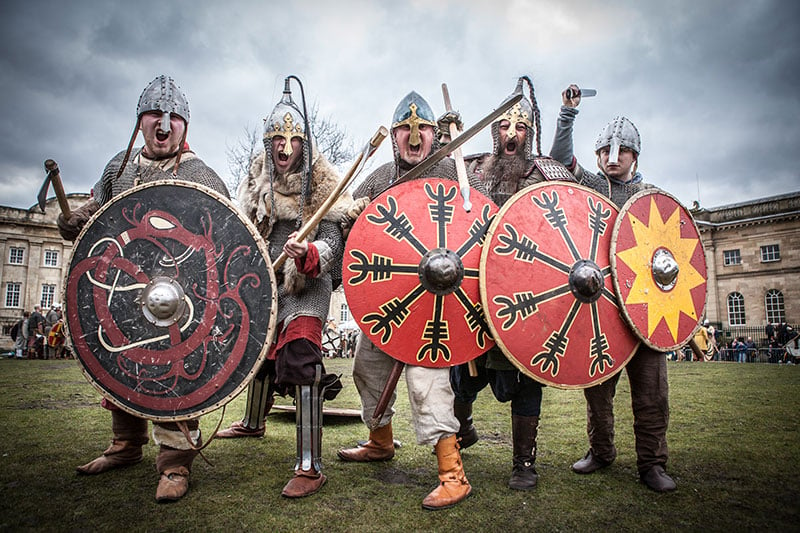Fortsæt med at udforske
York, Det Forenede Kongerige
Vigtige York
Udforsk mere
The city of York, with its cobbled streets, towering cathedrals, and medieval charm, has a rich and diverse history that spans centuries. Its name has undergone several transformations, each reflecting the influence of the cultures that once inhabited this ancient city. Let us take a captivating journey through time to explore York’s Viking history and the legacy they left behind.
Origins of the Name:
The story of York’s name begins with the Romans, who founded the city in AD 71. They called it “Eboracum,” derived from the Celtic word, meaning “Place of Yew Trees.” The Romans recognized the strategic significance of the city’s location at the junction of the Ouse and Foss rivers, and they built strong fortifications to protect it from the surrounding marshy regions.
 Enter the Angles:
Enter the Angles:
After the Romans departed, the Angles, a Germanic tribe, settled in the region. They mistakenly mispronounced “Eboracum” as “Eoforwic,” meaning “Boar Village,” owing to their own language and cultural influences. The Angles embraced the city as their own and added their unique touch to its development.
The Vikings Arrive:
In the 9th century, the Vikings, renowned seafarers from Scandinavia, set their sights on England’s shores. In 865, the infamous Viking leader Ivar the Boneless, along with his brothers, launched a large-scale invasion and captured York in 866. With their arrival came advanced shipbuilding techniques and seafaring knowledge, which significantly boosted York’s status as a commercial hub. The city’s access to the North Sea via the Ouse and Humber rivers opened up lucrative trading opportunities for the Vikings.
 From Jorvik to York:
From Jorvik to York:
The Vikings, with their distinct accent, referred to the city as “Jorvik,” a variation of the name that has since become synonymous with their presence in York. The Viking influence on the city was substantial, leaving a lasting impact on its architecture, customs, and culture.
A Thriving Trading Center:
Despite the Viking invasions and intermittent threats, York continued to flourish as a vital trading port during the Norman period. By the 14th century, it had become England’s second-richest city, driven by a thriving wool and grain trade. York’s merchants exported these goods to Northern Europe, while importing exotic fruits from Spain.
The Black Death’s Dark Shadow:
York’s prosperity was not without its challenges. The devastating Black Death, which reached the city in 1349, was partly introduced by trading ships on the Humber. The outbreak quickly decimated York’s population and led to a decline in its wealth and influence.
York’s Viking history is an integral part of its identity, leaving an indelible mark on the city’s landscape and heritage. From its Roman origins as “Eboracum” to the Viking-era “Jorvik,” the city’s name has evolved alongside the changing tides of history. Today, York stands as a living testament to the resilience of its people and the vibrant tapestry of cultures that have shaped this captivating city throughout the ages. As you walk through the narrow streets and explore its historic sites, remember that beneath the modern facade lies a city with a captivating past, waiting to be discovered and cherished.
Fortsæt med at udforske
York, Det Forenede Kongerige
Vigtige York
Udforsk mere


